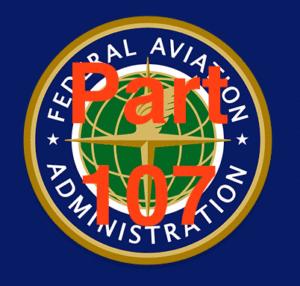Sponsored by MMC —
 According to the FAA’s Part 107, the authorized UAV operator, with his/her certification and checkups (every 24 months), stands as the legal entity as well as the official pilot that takes away the need for additional observer in any UAV operation. The FAA intervention will save tens of thousands of dollars for many service providers in the drone industry. It will relieve many businesses from engaging in hiring more staff.
According to the FAA’s Part 107, the authorized UAV operator, with his/her certification and checkups (every 24 months), stands as the legal entity as well as the official pilot that takes away the need for additional observer in any UAV operation. The FAA intervention will save tens of thousands of dollars for many service providers in the drone industry. It will relieve many businesses from engaging in hiring more staff.
How to make the most of the Part 107? Before Part 107, to fly a drone for hire, one had to go through the FAA’s 333 Exemption application process. It involved a lengthy (multi-page) application which according to the FAA took as long as 120 business days to process. But many applicants have waited for as long as entire year to receive their exemptions. Now, post-release of the Part 107 it is as easy as “you go read the rule online”, obtain the remote pilot airman certificate under the direct supervision of a person who holds such a certificate, and as long as you’re doing the things the rule requires, you’re good to go.
So, what do we need now? The hottest piece of paper to have at the moment in the UAV industry is a certificate with a small UAS rating. Developers as well as service providers will begin to provide training and issue certificates for the small UAV operators. An aviation academy, formed a year ago comes in handy to a Chinese UAV developer, MMC. At MMC, they provide theoretical, practical and simulative approaches. And after a few weeks the operator logs in many flying hours, take exams and even gets a chance to pick up on the technical side of UAVs.
Will Part 107 completely substitute for the 333 Exemption process? The simple answer is, No. As Part 107 stands for small UAS vehicles with limited flying height 400 feet (120m)operated in the line of sights, many large businesses focused on offshore inspections and a long distance flights will not see immediate benefit. Companies, however, that provide quick surveys,conduct inspections or take aerial photography as well as architectural firms, insurance companies, farmers and even builders will benefit.
How will Part 107 affect the technology of drones? Even previously, the development of navigational software has taken an incredible turn in its advance, but with the 400 feet limitation,many companies will focus on developing UAVs with integrated height control thus making it easy for the operator to remain within required height. MMC has been one of these companies that have managed to perfect and integrate navigational software in its agricultural and inspection production lines. By using a computer or a smart device, these drones are easily pre-programmed with abilities to maintain constant speed (100 mph (87 knots)), as well as the necessary height (400 feet).
Source link
 Unmanned Aerial Vehicle The latest drone news
Unmanned Aerial Vehicle The latest drone news



